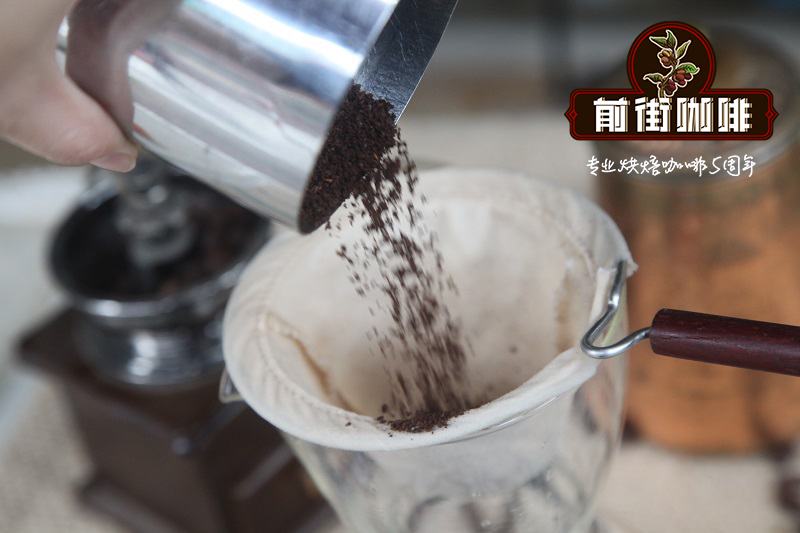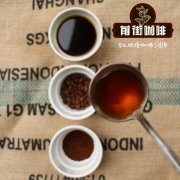Guatemala Cofiadi Farm washed coffee beans Flavor Description Producing area story

Professional coffee knowledge exchange More coffee bean information Please pay attention to coffee workshop (Weixin Official Accounts cafe_style)
Guatemala Coffee Cofiadi Farm Washed Coffee Beans (Ripe Beans)
Chocolate aromas, caramel aromas, dark chocolate flavors, stunning acidity, long lasting aftertaste, intense alcohol.
After the impact of the tide movement, people gradually began to have professional knowledge and skills related to the coffee industry. In addition to the annual large-scale coffee-related exhibitions in various countries, barista competitions, and the rapid changes in roasting equipment, our loyalty and love for coffee is no longer just satisfied with the current situation. For a professional coffee eater, there are many aspects to taste a good cup of coffee, among which the most profound key is the "micro-air queen" of each producing area, which is the key to pulling a whole body.
Importance of microclimate
In the most suitable gold coffee belt for planting, the most basic conditions are annual rainfall of 1000--2000 mm and average temperature in the range of 20℃. Even in the same producing area, there are many differences in coffee beans due to slight differences in climatic characteristics (flavor, layering, sour and sweet blend, aroma characteristics, etc.). Each different climate combination makes coffee beans have amazing personality and characteristics, and there are still many unique flavors that have not been discovered or defined. This is where the charm of microclimate lies, which makes many coffee lovers crazy to pursue the highest level, even CATAMONA is no exception!
The most brilliant center of Mayan civilization
Guatemala coffee
Central America has a unique geographical environment, with North America in the north and South America in the south. Due to the Caribbean Sea and the Gulf of Mexico, the climate is relatively hot and humid, and it has always been an important coffee producing area in the world.
Coffee has been the lifeblood of Guatemala's economy for more than a century. Interwoven with mountain terrain, volcanic lakes, plains and mountains, and adjacent Atlantic and Pacific oceans, more than 300 microclimates interweave, thus creating a unique flavor of each different region.
Guatemala's National Coffee Association (ANACAFE) is divided into eight regions according to coffee flavor, climate, soil and altitude:
Guatemala coffee eight regions location
Microclimate of Eight Coffee Producing Areas in Guatemala
Antigua production area/average temperature 18℃-22℃
Fertile volcanic soil, low humidity, abundant sunshine, cool evening wind are the characteristics of this area. The area is surrounded by three volcanoes, and whenever Fuego erupts, mineral-rich ash mixes with the soil to compensate for the lack of rainfall and give coffee a special smoky aroma.
Coffee flavor: sour and sweet balance, unique cocoa aroma. Guatemala standard acidity is generally referred to, mostly based on this area.
Traditional Attitlan production area/average temperature 20℃-23℃
Among the three volcanic areas in guahua, the soil in this area is the most rich in organic matter. 90% of the coffee plants are planted along the steep volcanic slopes, and the cool breeze blowing from Lake Atitlán every day gives the microclimate of the area its own style and characteristics.
Coffee flavor: strong flavor, with intoxicating aroma, sour taste with sweet.
Cobain Rainforest Production Area/Average Temperature 15℃-20℃
Due to cloud and fog, abundant rainfall and cool climate all year round, this area is mainly divided into rainy season and rainy season. Also affected by the tropical climate of the Atlantic Basin, the planting soil is mostly limestone and clay.
Coffee Flavor: Distinctive characteristics from other regions, with a distinct and subtle acidity, but also a light wine aroma.
New Oriental production area/average temperature 18℃-25℃
This area is rich in rainfall and has a climate similar to that of Coban Rainforest. Because it is located in a dormant volcanic zone, the soil contains a large amount of metamorphic rocks and minerals, which is very different from other volcanic active areas.
Coffee Flavor: Aroma, pronounced acidity and good texture. This area is the newest coffee-producing area in Guatemala.
San Marco Volcano/Average Temperature 21℃-27℃
The warmest coffee-producing region in the country, with abundant rainfall, the most intensive rainy season and the earliest flowering period. Due to unpredictable rainfall during the harvest season, most growers dry their coffee beans in the sun first and then by machine.
Coffee Flavor: Bright fruit acids, full beans, with fresh, light floral notes.
Aktiran Valley/Average temperature 14℃-31℃
Coffee grows at 2000 meters in this area, and the nearby Fuego volcano makes the coarse, sandy soil rich in minerals. Soothed by the gentle Atlantic Ocean breezes and marked by climate differences, coffee beans are better suited to sun-drying.
Coffee flavor: sweet, delicate fruit acid flavor, flavor and aroma to obtain most people's favorite.
Weiwei plateau production area/average temperature 20℃-24℃
Of the three non-volcanic producing areas, this area is the driest and highest in the single-coffee producing area. It is also the most rugged and remote part of Guatemala, and thanks to dry hot winds from Mexico, the mountains are free of frost, allowing coffee to be grown at nearly 6500 feet.
Coffee Flavor: Bright and delicate acidity, with a slight wine nose.
Farrahanis Plain/Average temperature 12℃-26℃
The volcanoes in this area are high in altitude, the soil is rich in pumice, and the Farahannis Plain is still an active volcanic area, so that the coffee in this area has similar characteristics to Antigua.
However, abundant rainfall, high and variable humidity, and large temperature differences give the Farrahanis Plains a very different flavor.
Coffee Flavor: Elegant aroma, mild and full-bodied overall texture, with special and pleasant acidity.
END
Important Notice :
前街咖啡 FrontStreet Coffee has moved to new addredd:
FrontStreet Coffee Address: 315,Donghua East Road,GuangZhou
Tel:020 38364473
- Prev

Guatemala San Isabel coffee beans good? Santa Isabel Coffee House Information
Weixin Official Accounts cafe_style Santa Isabel Estate is located in the northern part of Alta Verapaz in the province of San Cristbal in Guatemala, surrounded by extraordinary mountains, rainforests and impressive vegetation, close to the class that produces extremely hard beans. The estate is 4500 meters (1,372 m) above sea level
- Next

How to roast Guatemala's Drum Farm washed coffee beans_Can Guatemala make Italian coffee
Professional coffee knowledge exchange More coffee bean information Please pay attention to coffee workshop (Weixin Official Accounts cafe_style) Guatemala coffee god drum manor medium and deep roasting, inadvertently baked into Italian beans, with milk very good to drink. After that, I had three drinks with someone in the kitchen. 1) Pour chilled milk into a coffee glass 2) espresso machine
Related
- Detailed explanation of Jadeite planting Land in Panamanian Jadeite Manor introduction to the grading system of Jadeite competitive bidding, Red bid, Green bid and Rose Summer
- Story of Coffee planting in Brenka region of Costa Rica Stonehenge Manor anaerobic heavy honey treatment of flavor mouth
- What's on the barrel of Blue Mountain Coffee beans?
- Can American coffee also pull flowers? How to use hot American style to pull out a good-looking pattern?
- Can you make a cold extract with coffee beans? What is the right proportion for cold-extracted coffee formula?
- Indonesian PWN Gold Mandrine Coffee Origin Features Flavor How to Chong? Mandolin coffee is American.
- A brief introduction to the flavor characteristics of Brazilian yellow bourbon coffee beans
- What is the effect of different water quality on the flavor of cold-extracted coffee? What kind of water is best for brewing coffee?
- Why do you think of Rose Summer whenever you mention Panamanian coffee?
- Introduction to the characteristics of authentic blue mountain coffee bean producing areas? What is the CIB Coffee Authority in Jamaica?

